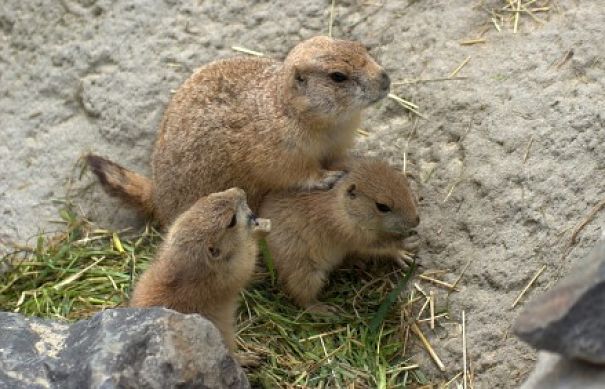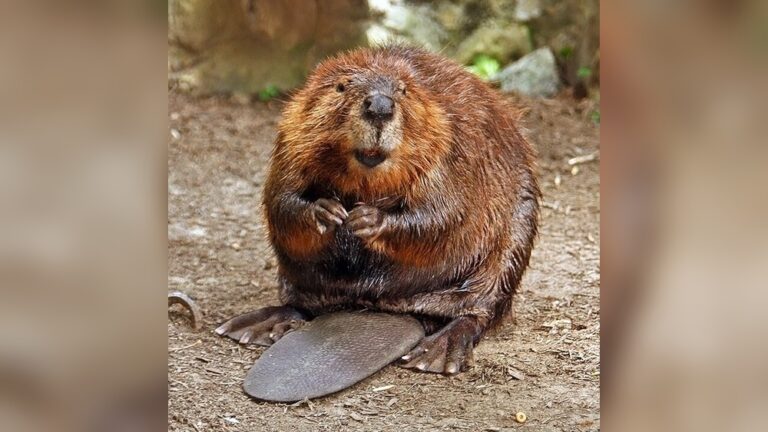Groundhog Babies: Adorable Facts You Need to Know Today
Have you ever wondered what happens when groundhogs bring new life into the world? Groundhog babies are fascinating little creatures that can teach you a lot about nature’s surprises.
Understanding their early days can change the way you see these shy animals forever. Keep reading, and you’ll discover amazing facts that will make you want to learn even more about these adorable bundles of fur. Your curiosity is about to be rewarded!
Groundhog Mating Season
The groundhog mating season is a special time in early spring. During this period, groundhogs come together to find partners and start families. Understanding their mating habits gives insight into their life cycle and behavior.
When Groundhogs Mate
Groundhogs usually mate from late February to early April. This timing aligns with the end of winter. The warming weather signals the start of the season. Female groundhogs are ready to breed soon after they wake from hibernation.
After mating, females carry their babies for about 32 days. The young ones are born in late March or April. This timing helps them grow during the warmer months.
Courtship Behaviors
Male groundhogs show several behaviors to attract females. They may chase or nuzzle the females gently. These actions help the pair bond.
Groundhogs use scent to communicate during courtship. Males leave scent marks to show their presence. Females respond by sniffing and moving closer.
The courtship period is brief but vital. It ensures strong pair bonds and healthy offspring.

Credit: www.animalfactsencyclopedia.com
Gestation And Birth
Groundhog babies are born after a careful and natural process inside their mother’s body. The gestation and birth phases are crucial for their survival and growth. These stages prepare the young groundhogs to face the world outside their burrows.
Understanding how long the pregnancy lasts and how the birthing takes place helps us learn more about these animals’ life cycle.
Pregnancy Duration
The pregnancy of a groundhog lasts about 31 to 32 days. This period is short compared to many other mammals. During this time, the mother groundhog stays in her burrow. She rests and prepares for the arrival of her babies. The young grow quickly inside her, ready to be born healthy and strong.
Birthing Process
Groundhogs give birth in a safe and hidden part of their burrow. The mother usually has between two and six babies at once. The birth happens quietly and without much disturbance. The newborns are blind and hairless. They rely fully on their mother’s care in the first weeks of life. The mother keeps them warm and feeds them until they can explore outside.
Newborn Groundhogs
Newborn groundhogs are tiny and fragile at birth. They start life deep inside their mother’s burrow. These little animals depend on their mother for warmth and food. Their early days are critical for survival.
Appearance At Birth
Newborn groundhogs are born hairless and blind. Their skin looks pink and very soft. They measure about 4 to 5 inches long. Their ears are flat against their heads. Tiny claws help them hold on to their mother. They look very different from adult groundhogs.
First Days Of Life
During the first days, newborns stay inside the burrow. Their mother feeds them rich milk often. They grow quickly and start to develop fur. Their eyes open after about two weeks. They begin to explore the burrow slowly. The mother keeps them safe from danger.

Credit: www.nationalgeographic.com
Growth And Development
Baby groundhogs grow quickly after birth. Their development is a fascinating process. From tiny newborns to independent animals, growth happens in clear stages. Each stage brings new abilities and changes. Understanding these stages helps us appreciate their life cycle.
Groundhog babies depend on their mother for food and safety. They start with limited movement and senses. Over weeks, their strength and skills improve. They open their eyes, start to move, and explore the world.
Milestones In Baby Groundhogs
Newborn groundhogs are blind and deaf. Their fur is soft and thin. Eyes open around 3 weeks old. Teeth begin to grow soon after. At 4 weeks, babies start crawling and exploring. By 6 weeks, they can run short distances. At 8 weeks, babies look like small adults. They prepare to leave the burrow soon.
Weaning And Feeding
Baby groundhogs drink their mother’s milk for about 6 weeks. After that, they eat solid plants. Their diet includes leaves, fruits, and vegetables. Weaning is a slow process. The mother shows babies how to find food. By 10 weeks, babies eat mostly solid food. They learn to survive on their own.
Groundhog Family Life
Groundhog family life is fascinating and full of care. These animals live in cozy burrows underground. The family stays close to protect each other. Young groundhogs learn important skills from their mother. They grow together in a safe space.
Mother’s Role
The mother groundhog is the main caregiver. She builds and maintains the burrow. She feeds her babies with milk. She keeps them warm and safe. The mother teaches them how to find food. She stays alert to dangers nearby. Her care is crucial for their survival.
Sibling Interactions
Groundhog babies play and explore together. They learn to share space and resources. Playing helps them develop muscles and coordination. Siblings groom each other to stay clean. They communicate with soft sounds and movements. These interactions build bonds that last. Growing together makes them stronger and ready for life.
Groundhog Babies In The Wild
Groundhog babies, also called pups, live in the wild with many dangers. They are born blind and hairless, needing care from their mother. The first weeks are the most critical for their survival.
Groundhog pups quickly learn to dig and find food. Their safety depends on where they live and how well they hide from predators. Their early life is a mix of growth and constant alertness.
Predators And Protection
Many animals see groundhog babies as easy prey. Foxes, hawks, and owls hunt them often. The mother groundhog stays close to protect her pups.
Groundhogs use burrows to hide from danger. These underground homes keep babies safe from most predators. The pups stay inside until they are strong enough to explore.
Habitat And Safety
Groundhogs live in fields, forests, and near farms. They choose places with good cover and soft soil for digging. This habitat helps keep babies safe and warm.
The mother groundhog builds a complex burrow system. It has many tunnels and chambers for shelter. These homes protect babies from weather and threats.
Grass and leaves cover the burrow entrance. This natural camouflage hides the babies from view. Safety depends a lot on the habitat’s quality and the mother’s care.
Fun Facts About Groundhog Babies
Groundhog babies, also called pups, are fascinating creatures. They grow quickly and show interesting traits from birth. Many people do not know much about these little animals.
This section shares fun facts about groundhog babies. Discover unique behaviors and some surprising trivia about them. These facts help us appreciate groundhogs more.
Unique Behaviors
Groundhog babies start to open their eyes after about two weeks. They stay in the burrow with their mother for about six weeks. During this time, they learn to dig and find food. The mother groundhog is very protective and keeps them safe. Pups play together and explore their home. This play helps them develop strength and skills.
Interesting Trivia
Groundhog babies are born blind and hairless. Each litter usually has two to six pups. The pups grow fur quickly to stay warm. They can weigh about one ounce at birth. Pups leave the burrow in late spring or early summer. Groundhogs live in family groups until the pups are ready to live alone. Their early life is full of learning and growth.

Credit: wildlifecenter.org
How Smart Pets Lover Can Help You with Groundhog Babies
Learning from Groundhog Babies: A Natural Lesson in Growth and Family Life
Watching groundhog babies thrive offers more than just cute moments—it’s a window into nature’s careful planning. Observing their growth and development alongside the dynamics of groundhog family life can inspire us to appreciate the importance of nurturing and environment. Just like groundhogs, pets in our care rely on attentive observation and tailored support during their early stages.
For pet parents, understanding how these little creatures depend on their families and surroundings reminds us to create safe, loving spaces for our own furry or feathered companions. Whether it’s recognizing signs of healthy development or fostering social bonds, the lessons from groundhog babies align closely with responsible pet ownership.
At Smart Pets Lover, where every wag, purr, and chirp tells a story, we encourage you to explore these natural rhythms and apply them to your pet’s life. If you’re curious to learn more or need guidance on nurturing young pets, reaching out to local wildlife experts or trusted pet care resources can be invaluable.
Frequently Asked Questions
How Many Babies Do Groundhogs Have At Once?
Groundhogs typically give birth to 2 to 6 babies per litter. This number can vary based on environmental factors and health.
When Are Groundhog Babies Usually Born?
Groundhog babies, called pups, are usually born in early spring, around March or April, after a 32-day gestation period.
How Long Do Groundhog Babies Stay With Their Mother?
Groundhog pups stay with their mother for about 6 weeks before becoming independent and learning to forage on their own.
What Do Groundhog Babies Eat Initially?
Groundhog babies start by nursing their mother’s milk. After a few weeks, they begin eating soft vegetation and grasses.
Conclusion
Groundhog babies are fascinating creatures to learn about. They grow quickly and explore their world soon. Watching them helps us understand nature better. These little animals play a big role outdoors. Taking time to observe groundhogs brings joy and knowledge.
Their early life shows how animals adapt and survive. Groundhog babies remind us of life’s simple wonders. Keep curious and enjoy discovering more about them. Nature holds many secrets waiting to be found.





